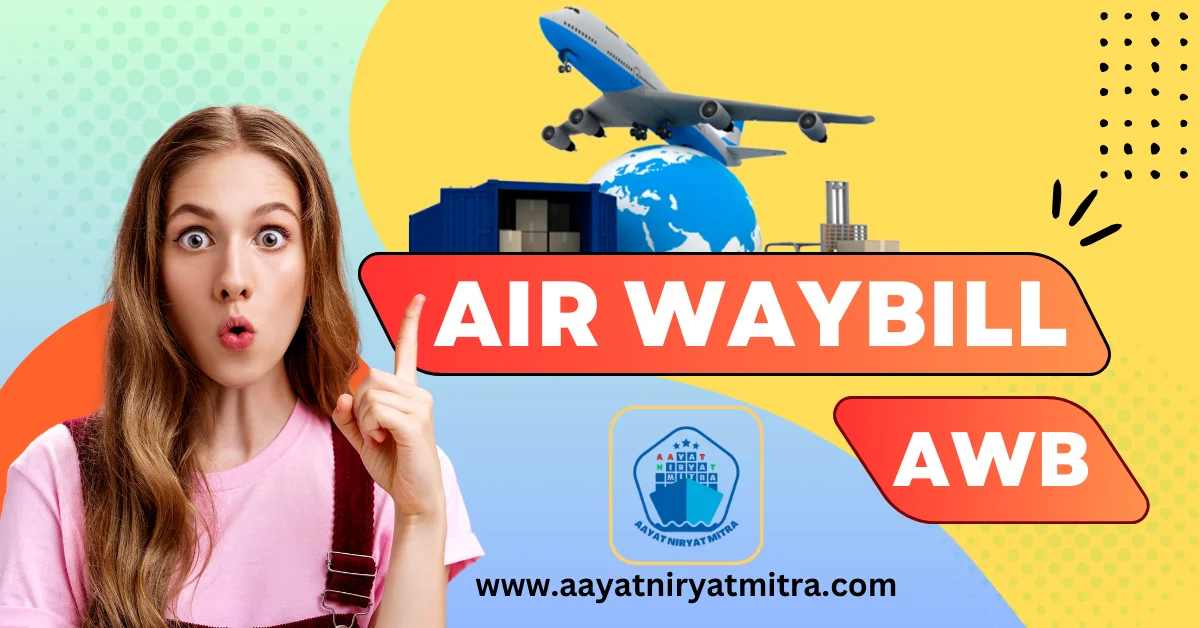Air cargo plays a pivotal role in global trade, and efficient documentation is the backbone of smooth cargo transportation. In this comprehensive guide, we will delve into the intricacies of the Air WayBill (AWB), demystifying its importance, components, and the overall process of air cargo documentation.
What is an Airway Bill?
An Air Waybill (AWB) is a crucial document used in the air freight and logistics industry to facilitate the transportation of goods by air. It serves as a contract of carriage between the shipper (the entity sending the goods) and the carrier (the airline responsible for transporting the goods). The Air Waybill outlines essential information about the cargo and the terms of transportation. Here are key points to understand about an Air Waybill:
The AWB, a legal, non-negotiable document, is an essential aspect of the freight import and export procedure, serving as:
Components of an Air WayBill:
Carrier Identification:
The International Air Transport Association (IATA) has created a standard format for air waybills, and its rules must be observed while filling out the data. It is available in two different formats:
- Airline Name and Logo: Easily identify your carrier and establish the contract of carriage.
- Airline Prefix: A unique three-letter code used to identify the airline in the AWB number.
Electronic Air Waybill (eAWB):
You may even fill out an air waybill online, which is known as an e-Air Waybill (e-AWB). All e-AWBs are completely neutral. According to IATA, the Electronic Air Waybill Resolution 672 (MeA) overcomes the need for a paper AWB, streamlining the air cargo procedure.
Shipment Details:
This section pinpoints the origin and destination of your cargo like boarding passes for your goods:
- Shipper: The exporter or authorized representative sending the goods.
- Consignee: The importer or receiver expecting the goods at their final destination.
- AWB Numbers: The AWB (11-Digits) introduces the key players in your air cargo saga:
- Origin Airports: Clearly stated using 3-letter IATA codes, (Ensuring smooth routing and delivery)
- Destination Airports: Clearly stated using 3-letter IATA codes, (Ensuring smooth routing and delivery)
- Date of Issue: Marks the official start of your air cargo journey.
- Flight Numbers: If pre-assigned, indicate which specific flights will carry your precious cargo.
- Notify Party: An optional party who receives shipment arrival notifications.
Goods Description:
This section paints a detailed picture of your cargo, ensuring proper handling and identification:
- Nature of Goods: A clear and concise description of the contents, is crucial for customs clearance.
- Number of Packages: Specify the total number of units making up your shipment.
- Type of Packages: Boxes, crates, pallets – describe the packaging used for your goods.
- Weight and Dimensions: Gross weight and dimensions of the entire shipment for accurate handling and space allocation.
Additional Declarations:
The AWB provides space for crucial details that may impact your shipment:
- Declared Value for Customs: The value of your goods used for customs calculations and potential insurance claims.
- Currency: Specify the currency used for the declared value.
- Special Handling Instructions: Indicate any special requirements like temperature control or fragile cargo.
Charges:
A breakdown of the costs associated with the transportation, such as freight charges and other applicable fees.
Signatures and Certifications:
The AWB serves as a binding contract, requiring the official signatures of:
- Shipper’s Signature: Confirms the shipper’s agreement to the terms and conditions outlined in the AWB.
- Carrier’s Signature: Acceptance of the shipment by the airline and commencement of their responsibility.
Importance of Air WayBill in Air Cargo:
The Air WayBill serves as a crucial tool in the air cargo process, facilitating seamless communication between various stakeholders. It not only outlines the terms of transportation but also aids in customs clearance and tracking.
Non-Negotiable Document:
An Air Waybill is a non-negotiable document, meaning that it is not a document of title, and its ownership cannot be transferred to another party. Unlike a Bill of Lading used in sea freight, an Air Waybill does not confer ownership of the goods.
Neutral AWB
This format is similar to the one described above but without the airline information.
Air Waybills are available in eight distinct color codes. Each color represents something different:
- Green: Carrier’s copy (original) This is the original copy, which is still with the carrier (issued authority).
- Pink: Consignee’s copy (original) It is also considered the original copy, and it is retained by the shipment’s consignee.
- Blue: Shipper’s copy (original) It is also considered original, this copy or an Air Waybill is given to the shipper.
- Brown: Receipt or proof of delivery (duplicate) This is a duplicate copy of the Air Waybill that is used as a receipt or proof of delivery during the commuting process.
- White: 4 other copies for various other purposes (duplicates) The shipper keeps this copy as well and uses it for different purposes.
Types of Air Waybills:
Master Air Waybill (MAWB):
The air cargo is subject to customs checks, and once all customs formalities are completed and the cargo is delivered to the principal carrier, a Master Air Waybill is provided to the freight forwarder. The freight forwarder is referred to as the shipper in this document, and the person who receives the package before the consignee at the destination port is referred to as the consignee. This individual then makes the final delivery.
House Air Waybill (HAWB):
This bill is provided to the exporter after the freight forwarder receives export items from the exporter. The shipper is the exporter in this paper, while the consignee is the importer.
With advancements in technology, many countries and carriers now accept electronic Air WayBills (eAWB), streamlining the documentation process and reducing paperwork.
Importance in Air Cargo:
- The Air Waybill is a critical document for air cargo transportation, serving as a receipt for the goods, a contract of carriage, and a document that aids in customs clearance.
- It provides essential information for tracking the shipment throughout its journey.
Customs and Compliance:
The Air Waybill contains information necessary for customs authorities to assess duties and taxes, ensuring compliance with import and export regulations.
Also Read | How to Start Exports
Also Read | Incoterms 2020
Also Read | Payment Terms for Exports
FAQs about Air WayBill
Q: What is the difference between an Air WayBill and a Bill of Lading?
Ans: While both documents serve as contracts of carriage, an Air WayBill is used in air freight, while a Bill of Lading is used in sea freight.
Q: Can an Air WayBill be transferred to another party?
Ans: No, an Air WayBill is non-negotiable and cannot be transferred.
Q: Is an electronic Air WayBill (eAWB) legally accepted?
Ans: Yes, many countries recognize and accept electronic Air WayBills, streamlining the documentation process.
Q: What happens if there are discrepancies in the information on the Air WayBill?
Ans: It is crucial to rectify any discrepancies before the cargo is loaded onto the aircraft to avoid delays and complications.
Conclusion
In conclusion, the Air WayBill is an indispensable element in the world of air cargo, ensuring the smooth and efficient transportation of goods across the globe. Understanding its components and significance is vital for both shippers and carriers to navigate the complexities of international trade seamlessly.
Enhance your air cargo knowledge and optimize your shipping processes by mastering the ins and outs of the Air WayBill – a key player in the logistics game. Whether you are a seasoned professional or a newcomer to the industry, this guide is your go-to resource for mastering air cargo documentation.
If you discover an error in the “Air Waybill: Your Complete Guide to Air Cargo Documentation 2024” information provided to us, please notify us immediately via the comment box and email; if the information provided by you is correct, We will change it.
If you enjoyed this article, please share it with your friends. Please visit Aayat Niryat Mitra | Import Export Friend for more information on this and other topics. Thank you for stopping by.

